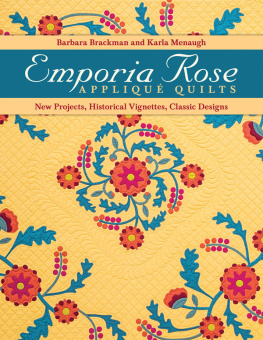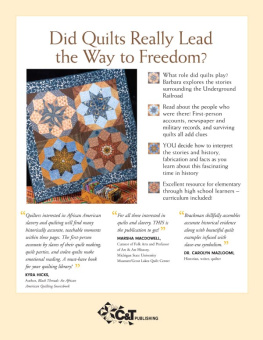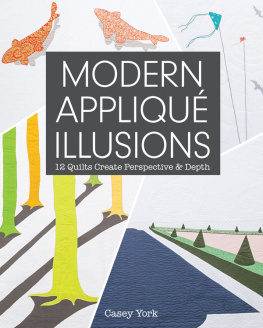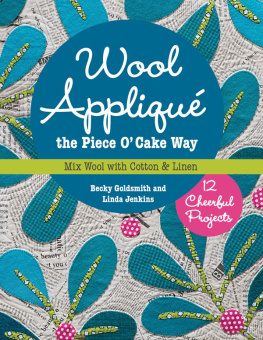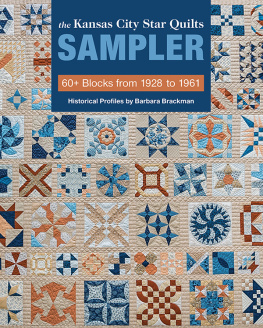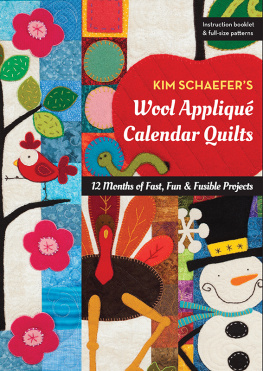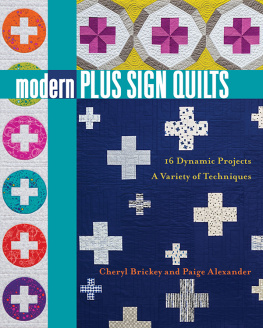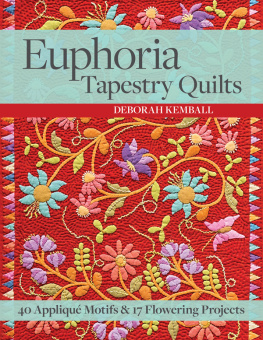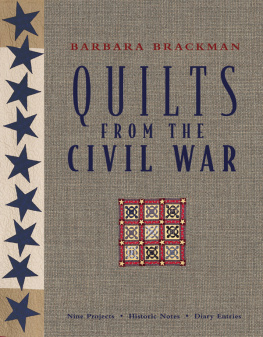Publisher: Amy Marson
Creative Director: Gailen Runge
Art Director: Kristy Zacharias
Editors: S. Michele Fry and Monica Gyulai
Technical Editors: Ellen Pahl and Amanda Siegfried
Cover/Book Designer: April Mostek
Page Layout Artist: Katie McIntosh
Production Coordinator: Rue Flaherty
Production Editor: Alice Mace Nakanishi
Illustrator: Mary E. Flynn
Photo Assistant: Mary Peyton Peppo
Instructional photography by Diane Pedersen, unless otherwise noted
Acknowledgments
We want to thank everyone who has made an Emporia Rose Sampler, including class members at the Common Threads Quilt Shop in Waxahachie, Texas, and at Prairie Point Quilts in Shawnee, Kansas. We show a few of them here, but many more were made.
We also want to thank the staff at the Denver Art Museum and the Spencer Museum of Art at the University of Kansas. Both museums have been very generous over the years in sharing their quilt treasures. The archives at the Lyon County Historical Museum (Emporia, Kansas) have been helpful toopainting a picture of Emporia almost 100 years ago.
In the 1980s, Mary Kretsinger, daughter of key Emporia quilter Rose Kretsinger, spent a good deal of time discussing her mother and her work, as did Mrs. Harold Becker, niece of Charlotte Whitehillanother of Emporias prominent quiltmakers. We also are grateful to the Kansas Quilt Project, which sponsored numerous interviews with family members of other Emporia quiltmakers, helping us gain insight into an impressive quilting community.


Commercial Street, Emporia, Kansas, about 1905
The Emporia Rose Sampler celebrates the women in a Kansas community who created a unique group of quilts in the 1920s, 30s, and 40s. Their quilts have been published around the world as ideal examples of design and workmanship. Three women have been recognized for their roles in this artistic movement: Rose Good Kretsinger, whose work is now in the Spencer Museum of Art at the University of Kansas; Charlotte Jane Whitehill, whose quilts are at the Denver Art Museum; and Josephine Craig, who has three quilts at the Kansas Museum of History. The works of several other equally talented appliqu artists remain in their families.
We first became aware of the Emporia quiltmaking community in 1985 when the Kansas Quilt Project traveled around the state documenting quilts. We discovered that many of the most dynamic mid-twentieth-century quilts had some link to that one town. Those Emporia quilts were a product of their place and time.
The Place
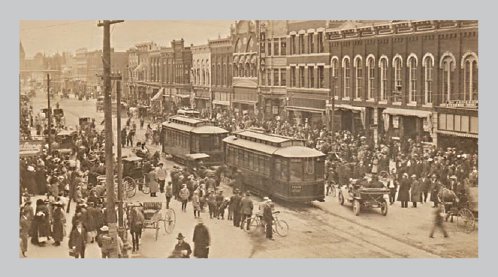
Opening the streetcar line in 1911
Emporia, in the grass-covered Flint Hills of eastern Kansas, was founded in 1857 by easterners with free-state sympathies before the Civil War. The name comes from the Greek word for marketplace, a concept the town exemplified in the late nineteenth and early twentieth centuries when it thrived on railroads and cattle.
But Emporia was much more than a cow town. Settled by relatively wealthy New Englanders, it boasted two institutions of higher education and an opera house. Nicknamed the Athens of Kansas by William Allen White, the Emporia Gazettes prominent Pulitzer Prizewinning editor, it became known as a place with a well-educated, sophisticated population that held on to front-porch, main-street values.
White, who hobnobbed with movers and shakers in politics, business, and the arts, played a role in boosting the reputation of Emporias outstanding quilters. His paper regularly reported on their victories at quilt shows.
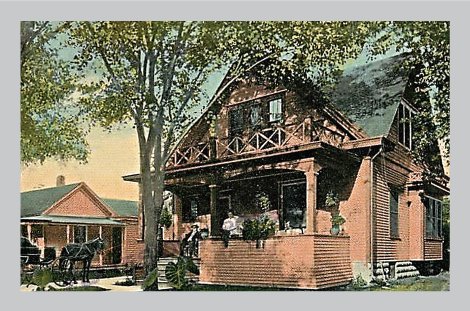
Postcard, showing popular poet Walt Mason on his front porch, about 1910. The homey rhymes that Uncle Walt wrote for the Gazette were well liked nationally. With his royalties, he soon built a much larger house.
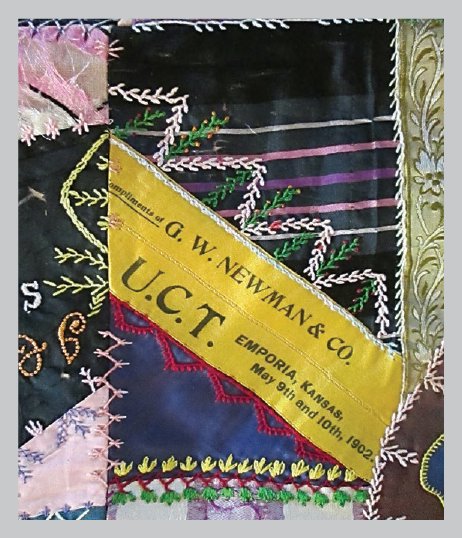
A ribbon in a crazy quilt recalls a 1902 convention of traveling salesmen in Emporia. Newmans Department Store supplied the souvenirs to members of the United Commercial Travelers, a fraternal and lobbying group. Rose Kretsingers father was a traveling salesman around this time.
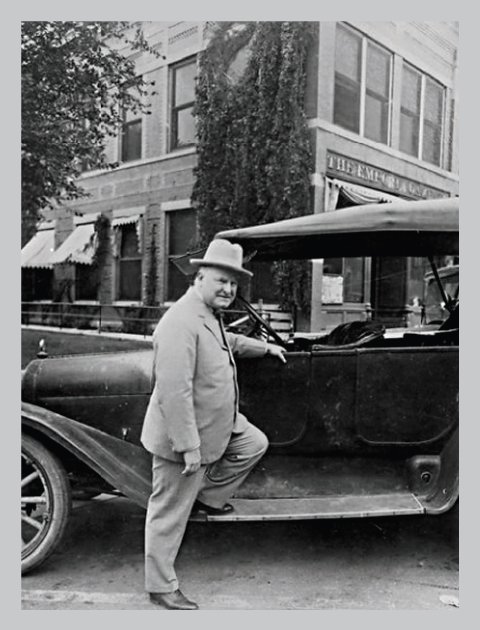
William Allen White in front of Gazette offices, 1924
White liked to celebrate Emporia as egalitarian, but class differences are evident in his paper and in the quilters social circles. He characterized the Gazettes audience as the best people of the city. These prominent citizens included quiltmakers, such as Rose Kretsinger, Jennie Soden, and Ifie Arnold, whose husbands worked in law, banking, and business. Even during the Great Depression they had money for the best supplies from Kansas City and Topeka, and they had time to appliqu intricate designs. When they couldnt find suitable fabric, they ordered better cotton from London.
These women set the trends, but many women of lower classes also made spectacular quilts. Among these quilters were Charlotte Jane Whitehill, an insurance agent, and Ruth Lee, a seamstress who helped support her family by remaking worn mens suits into womens clothing.
In our Kansas Quilt Project interviews we learned about farm wives who quilted together in the country around Emporia and about individuals, such as Josephine Craig, who retired from farm to town and began to make quilts for shows. We also heard about the quilters who finished the elegant appliqud tops. Most were sewing for others because they needed the money; they charged by the yard of thread used in the stitching.
Clearly, quilting in Emporia drew together women from many walks of life, but class differences still kept them apart. While most were acquainted with one another through clubs or churches, they were not a close-knit community of friends. Some shared patterns and many shared the same quiltersthe unsung women who finished the quilts. Quite a few shared a spirit of competition, keeping their latest work secret until the fall agricultural fairs.
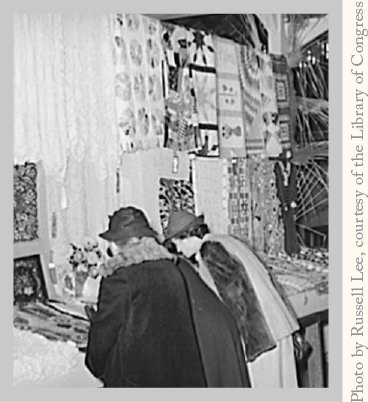
Gonzales County Fair, Texas, 1939
Emporias quilters vied against each other, according to one daughter, with the textile division at the Lyon County Fair a prime spot for competition. Everyone entered the Lyon County Fair. Many won prizes at the state fairs; and a few, including Josephine Craig and Rose Kretsinger, won national contests. One reason Emporia was such a quilting hotbed was that the Gazette, in its mission to boost the town, kindled the spirit of competition under the recurring headline Emporia Gets In.
The Period
The time span for these impressive quilts, 19251945, also contributed to the Emporia phenomenon. While those years were not particularly good times for Kansas farmers nor the towns that depended on their trade, they did coincide with a boom period for innovations in design and needlework. Quilt historians mark the late 1920s as the beginning of an American quilt revival, in which women were caught up in a patchwork fad. Rose Kretsinger and her mother, Anna Good, took up the craft just as needlework editors began to respond to the growing interest in an old craft.
Next page
